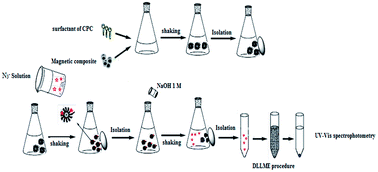Solid-phase extraction combined with dispersive liquid–liquid microextraction for the spectrophotometric determination of ultra-trace amounts of azide ion in water samples
Abstract
In this research, solid-phase extraction (SPE) using modified multi-walled carbon nanotube/nano-Fe3O4 composites combined with dispersive liquid–liquid microextraction (DLLME) as a preconcentration technique has been developed for determination of ultra-trace amounts of azide ion in water samples. In SPE–DLLME, azide ion was adsorbed from a large volume of aqueous samples (100 mL) into 20 mg modified multi-walled carbon nanotube/nano-Fe3O4 composites as sorbent. After elution of azide ion from the sorbent using sodium hydroxide, the DLLME technique was performed on the desorbed solution. Finally, the azide ion in the extracted organic solvent was determined by UV-vis spectrophotometry. Some important parameters in the SPE and DLLME steps were studied and optimized. The proposed method provided a high enrichment factor of 250 for azide ion. The calibration graph was linear in the range of 0.10–5.0 ng mL−1 with a limit of detection (LOD) of 0.05 ng mL−1. The proposed method was successfully applied for determination of azide ion in water samples.


 Please wait while we load your content...
Please wait while we load your content...